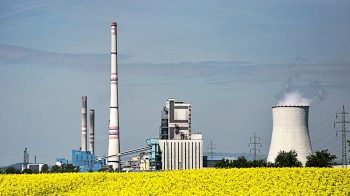According to a research report “Seed Treatment Market by Type, Application Technique (Coating, Dressing, Pelleting), Function (Seed Protection and Seed Enhancement), Formulation, Crop Type (Cereals & Grains, Oilseeds, Fruits & Vegetables) and Region – Global Forecast to 2027″ The market for seed treatment is estimated at USD 6.1 Billion in 2022; it is projected to grow at a CAGR of 8.3% to reach USD 9.2 Billion by 2027.
Asia Pacific accounted for the fastest region, during the forecast period, in terms of volume and value, respectively. Asia Pacific comprises of the largest developing countries with vast agricultural lands as compared to other regions. The per capita income of the region depends on the agricultural activities conducted in the countries. The key countries that play an important role in the agriculture sector in this region are India, China, Japan, and Thailand. Cereals & grains, fruits & vegetables, are the leading agricultural commodities grown in these countries. Rice cultivation and the predominance of small-scale manufacturers are widely seen across all the countries of Asia Pacific.
Download PDF Brochure:
https://www.marketsandmarkets.com/pdfdownloadNew.asp?id=503
North America dominates the market contributing to 39% in the global seed protection market. The region is a key exporter of agricultural products. It is mainly dominated by large-scale operations, primarily focused on exports. North America has an advantage of having a very organized distribution chain. Factors such as fertile soil, availability of water and land, entrepreneurial farmers, and efficient infrastructure are the key competitive advantages the North American market has. The major cultivated crops in the region include corn, soybean, and wheat, which account for 70% of cultivation, followed by canola, alfalfa, cotton, and barley. Seed treatment is the safest alternative to protect crops with a minimum residue level. Plant extracts and oil-based seed treatments for organic farming, a seed treatment for abiotic stress, and controlled-release technology in seed treatment are the key points of the growth of the North American market.
The seed enhancement segment by function is projected to grow with the highest growth rate in the seed treatment market over the forecast period.
Seed enhancement includes practices and technologies that improve the seed germination and seedling growth, thereby improving the overall crop’s harvested yield and quality. The seed enhancement market is further segmented into products, which enhance the viability of the seed and functions that include processes used to enhance seeds. There has been an increase in research & development investments carried out to develop new and better products, such as biofertilizers and crop protection chemicals, biologicals.
Treatments such as pelleting, film-coating, and encrusting are included, which improve seed sowing. Some treatments, such as nutrients, enhance nutrient availability or provide inoculates required for seedling establishment.
The liquid solution segment by formulation is projected to grow with the highest CAGR of the seed treatment market over the forecast period.
Formulations have a significant impact on the survival of microbial during the process of product elaboration, storage, and application. The growth of microrganisms depends in various physical and chemical properties of the seed treatment formulations used. The liquid solution, also known as ‘quick wet’ method, is used for mainly for seed protection. For instance, fungicides can be applied to the seed and mixed well ensures proper coating of the solution. The free-flowing liquid solution then penetrates the seed coat, instead of sitting on the surface. This method can be used for fertilizer and nutritents such as trace elements. As there is high absorption rate, less of the product is required to be applied on the seeds.
Speak to Analyst:
https://www.marketsandmarkets.com/speaktoanalystNew.asp?id=503
Key players in this market include Syngenta (Switzerland), BASF SE (Germany), Corteva Agriscience (US), FMC Corporation (US), UPL Ltd. (India), Bayer AG (Germany), Solvay (Belgium), Novozymes A/S (Denmark), ADAMA Ltd. (Israel), Eastman Chemicals Ltd. (US), Croda International Plc (UK), Certis Europe (Netherlands), Sumitomo Chemical (Japan), Rizobacter (Argentina), Bioworks Inc. (US), Marrone Bio Innovations, Inc. (US). These players in this market are focusing on increasing their presence through mergers & acquisitions, and partnerships. The seed treatment companies have a strong presence in North America, Europe, and South America. They also have manufacturing facilities along with strong distribution networks across these regions.
